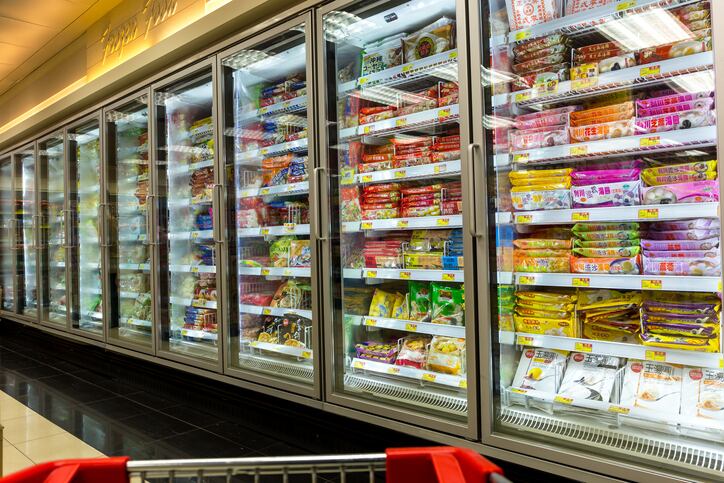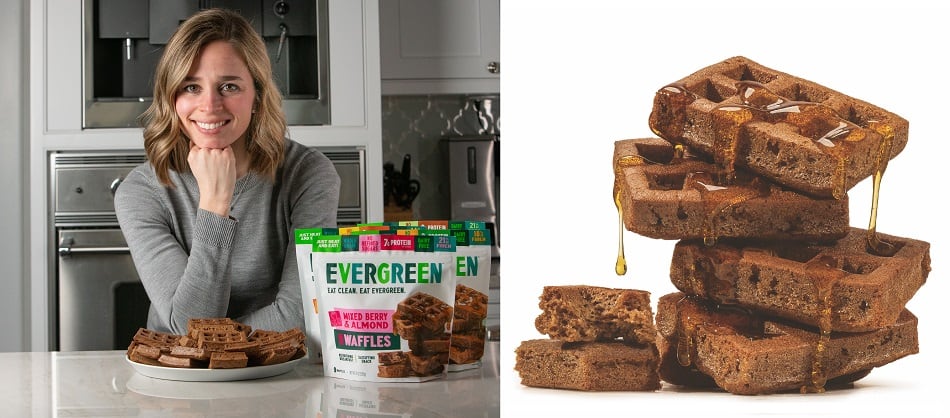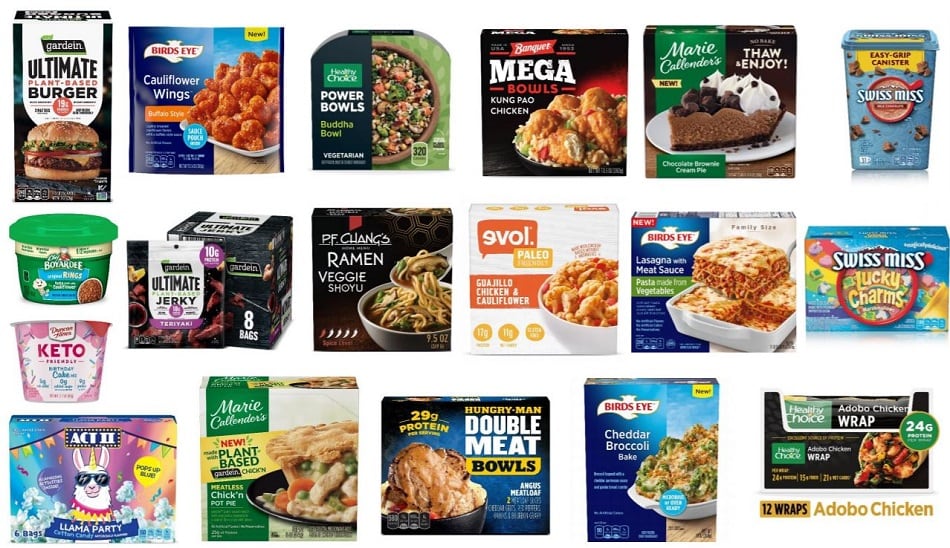According to the American Frozen Food Institute and FMI-the Food Industry Association’s Power of Frozen Report released Feb. 18, dollar sales of frozen food increased 21% in 2020 and units increased 13.3%, resulting in a 19.4% increase in spending per buyer.
“With elevated focus on shelf-life and many more meals at home, frozen food was one of the big winners across grocery departments” in 2020 and during the pandemic, the report notes.
The categories gains were immediate after the coronavirus’ initial outbreak with frozen food sales nearly doubling in mid- and late-March and continuing to track in subsequent months 30%-40% ahead of the same time a year ago, according to the report. And while sales have slowly tapered to around 15%-20% above 2019 levels, the report adds that they are continuing well ahead of most other categories.
The lift in sales of frozen products was across all categories, but according to the report, seafood, novelties, pizza, breakfast food, processed poultry, appetizers and potatoes/onions also increased their share of total department sales.
Not only did sales of frozen increase, but the number of consumers purchasing frozen food also increased, according to the report, which found: “Amid the pandemic, the share of core frozen food consumers, defined as those who consume frozen food daily or every few days, rose from 35% in 2018 to 39% in 2020.”
While the main attraction of frozen appears to be its long-shelf life, as illustrated by 83% of frozen food shoppers seeking the items “as a back up solution,” the report found consumers also valued frozen for its ease of preparation, as a quick total meal solution and time savings.
While much of the category’s growth may be attributable to circumstances surrounding the pandemic, major players in the segment also sought in recent years to elevate the products they offer to help turn the tide on declining sales.
Among these companies is ConAgra, which sells iconic frozen brands such as Birds Eye, Marie Callender’s, Banquet, Healthy Choice and Gardein.
“Frozen food has long been important to the American consumer and the category is large, but it languished for quiet a few years. Not because consumers didn’t trust the temperature state, but because they didn’t like the food,” ConAgra CEO Sean Connolly said earlier this month at the Consumer Analyst Group of New York conference.
In response, Connolly said, several years ago ConAgra “began to re-imagine our frozen portfolio” to account for changing preferences and incorporate “modern food attributes into our wide array of iconic brands.”
For example, Marie Callender’s is introducing a frozen pot pie with cauliflower in the crust, new Birds Eye value-added meal helpers, such as sheet pan meals and skillet sides, as well as other simple solutions that address modern wellness trends, Connolly said.
These launches build on work underway by the company before the pandemic, which helped ConAgra drive $1b in growth from 2017 through the end of 2020. When the company’s “frozen renaissance” began in 2017, it captured $4.9b in frozen retail sales, the next year it climbed to $5.1b and reached $5.2b in fiscal year 2019 before the pandemic sent sales up to $5.9b.
Frozen shoppers zero in on nutrition
Data from IRI suggests ConAgra’s and others’ efforts to reposition their frozen products as better-for-you and value-added will pay off in 2021, even as local economies reopen and vaccinated consumers embrace eating out more often or return to eating at school and the workplace.
Noting frozen department sales increased 19.4% in January 2021 and brought in an additional $832m compared to the same time last year, IRI pointed to the power of health-related New Year’s resolutions to sustain the category’s growth.
“While initially many shoppers took to comfort and traditional foods [during the pandemic], January kicked off with New Year’s resolutions for 64% of shoppers. More than one third, 35%, aim to eat healthier, in general; 35% want to get more exercise; and 29% plan to save money. … With many shoppers thinking of frozen foods as being cost-effective and nutritious, this once more favors frozen food sales,” IRI explains in a January update on the frozen segment.
FMI’s and AFFI’s research confirmed that core frozen food consumers have an “above-average interest in many nutrition and production traits.”
According to the study, nearly three-quarters of frozen food shoppers “put some effort into selecting nutritious and healthy food options,” and 41% apply greater effort in selecting nutritious and healthy foods during the pandemic.
Demand for convenience will exceed the pandemic
Just as the demand for healthier options likely will exceed the pandemic, so too will need for convenience, which ConAgra’s Connolly said his company is “tailor made to capitalize on.”
For example, he noted during the pandemic Gen Z and Millennial consumers “drove frozen food growth by an outsized margin,” and they likely will continue to buy frozen long after the pandemic as they start families.
“We know the annual frozen spend per buyer increases in households with young kids, and it increases as the kids get older. If you put this in perspective during the important family formation years, there will be 25 million or almost 40% more Millennials than there were Gen-Xers and almost half of Millennials have not yet started to have kids,” Connolly said.
“We fully expect their consumption of ConAgra products will grow along with their families,” he added.
Consumers offer ‘hundreds of suggestions’ to further improve frozen
To help frozen food brands leverage their gains during the pandemic and continue to drive growth, the FMI and AFFI report boils down “hundreds of suggestions” from consumers to improve the shopping experience in the shopping aisle, including a desire for better organization, improved signage and lighting, and also a wider selection of healthier items and products in resealable packaging.
For those interested more details and insights from the report, they can find it at https://affi.org/insights/.




